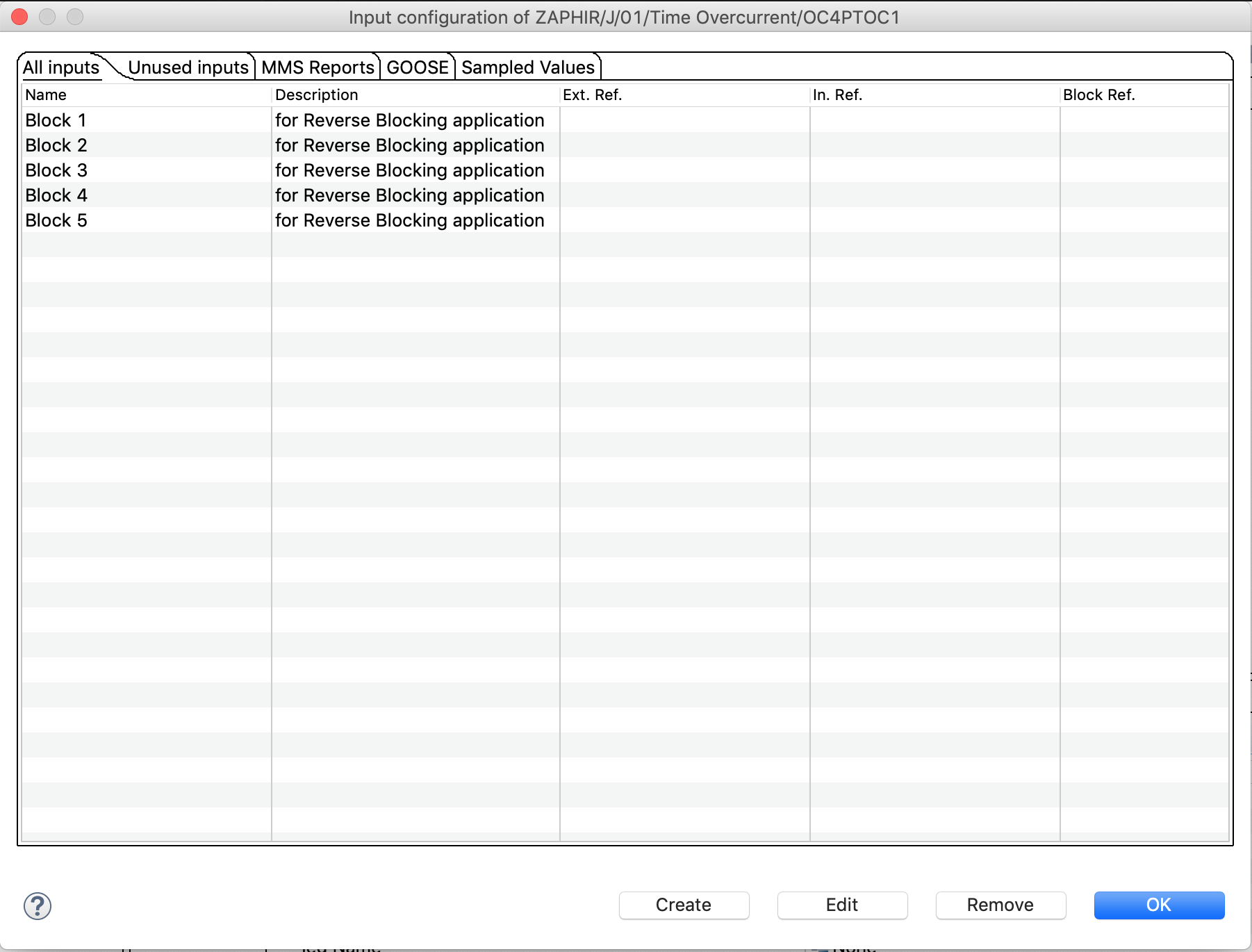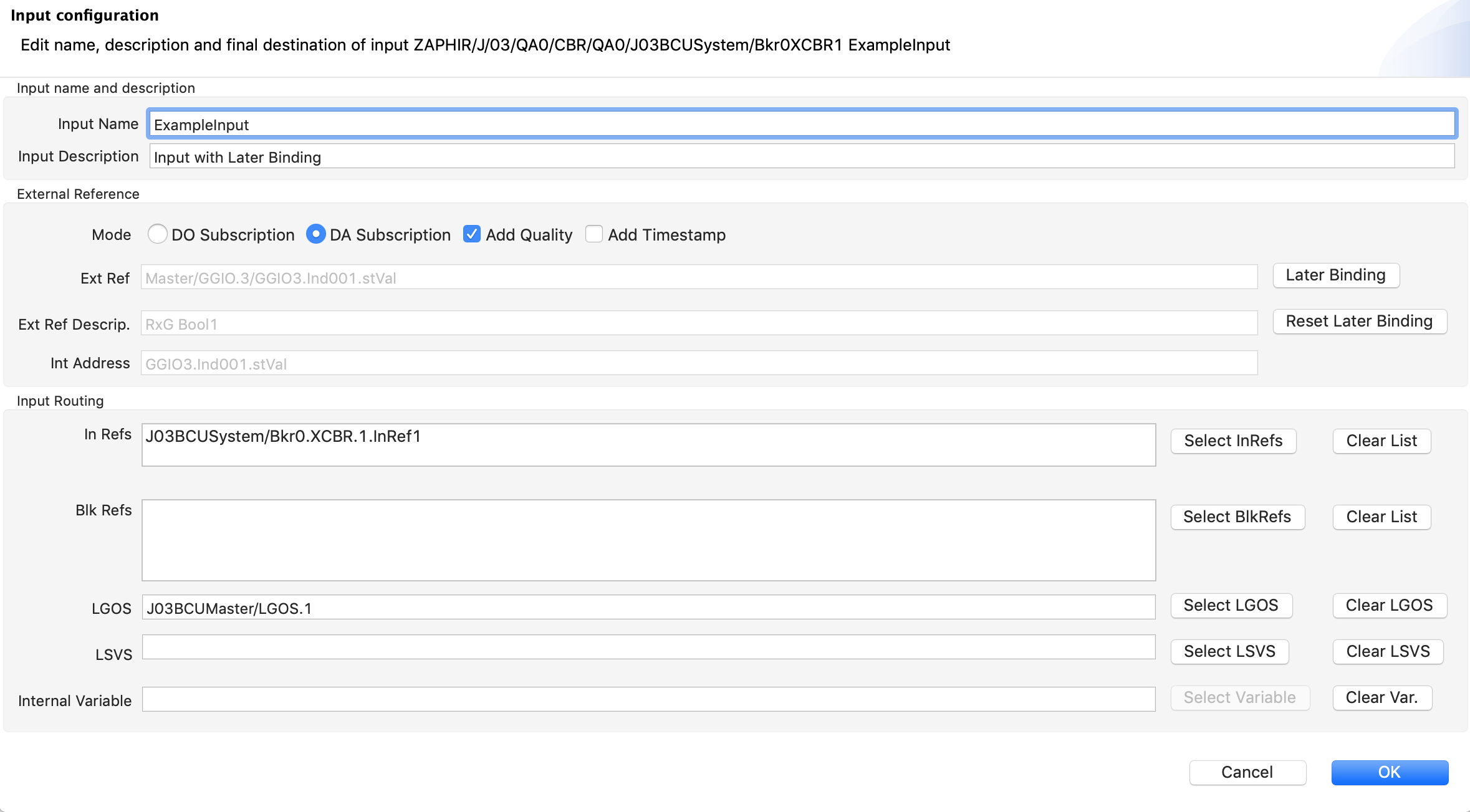Configure Inputs
Inputs represent inbound data - they can be used to configured later binding information and internal routing, add descriptive elements and formalize requirements on the communication structure. As with Signals, there is a ‘Configure Inputs’ menu entry on the logical node that brings up a dialog to create and configure Inputs.

Inputs configuration dialog
Inputs can only be connected to a single receiving data element - the tabs at the top of the dialog allow you to filter which Inputs are shown, depending on the type (or lack of) incoming connection.
Using the Create or Edit button brings up a configuration dialog that shows the options associated with the Input:

Input configuration dialog
While the logical node is a pure specification, only the name and description attributes are available for editing. When the logical node is implemented by a device ( as in the example screenshot ), implementation-specific attributes become available. The buttons ‘Later Binding’, ‘Select InRefs’, ‘Select BlkRefs’, ‘Select LGOS’, ‘Select LSVS’ bring up a selection dialog that presents a filtered view of the IED structure where corresponding elements can be selected.
The Internal Variable field is deprecated and will be removed.
MMS Reporting Inputs
The MMS Reporting Inputs dialog is only applicable to nodes of the Interface group (i.e. IHMI, ITCI, etc). It represents a way to quickly define Report publishing from a client-centric perspective. See Configuring Applications (Report) for more details.
Please note that the functionality of this dialog will move to the Report tab of the ‘Configure Inputs’ dialog in a later release.
